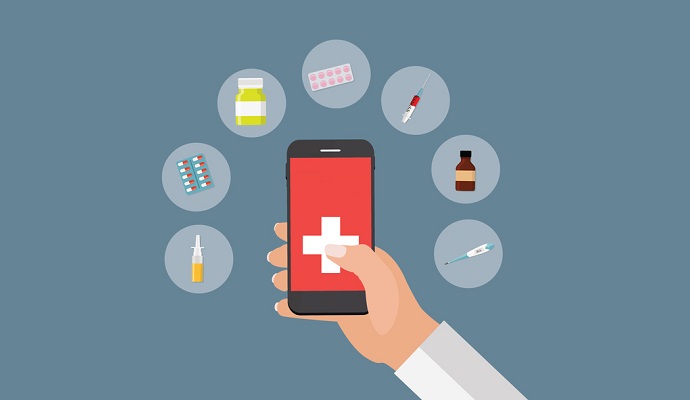
Virtual care and Telehealth:
The term “virtual care” and “telehealth” are highly used nowadays. Whereas do we know what do these terms refer to? Do we know the difference between them? To point out the difference between these two, let us clarify their definition.
Virtual care is any interaction between a patient and health care provider that does not involve direct contact, and it can include video visits, tele-homecare, and secure messaging.
Telehealth is the delivery of health-related services by means of technologies related to information and communication irrespective of the distance. Examples of telehealth include health education services, remote monitoring of vital signs, ECG or blood pressure, and remote doctor-patient consultations (telemedicine).
On the whole, Virtual healthcare is a component of Telehealth, which refers to the many ways healthcare providers interact with their patients.
Now, the coronavirus pandemic has made this somewhat novel technology now a necessity to ensure access to and continuity of care.

Source: Healthcare IT news
Some emerging virtual care areas are:
- Online behavioral therapist for anxiety, depression, and other behavioral health problems.
- Physicians for online webinars on movement therapy.
- Child nutritionist for proper diet cares virtually.
These have paved the way for unlimited online health care. Here are some guidelines you need to follow to protect yourself from frauds and health record thefts.
The Dos
Do Verify the Website and the Doctor
Often we encounter fraudulent websites that request us to pay for consultations with leading doctors. But once paid, they claim to not receive money or the website goes missing. Impersonation of the doctor in order to get your details or money can have hazardous after-effects. To clarify this always ask for ID proof of the doctor, and if possible record it for future references. Even if you know the doctor personally, try practicing this habit of asking doctor’s verification. To avoid this kind of disaster, make sure you check the certification of the website and the hospitals linked to it. Additionally, the patient should introduce themselves to make the procedure easy-going and straightforward.
Do choose the best mode of communication
There are several virtual care options available ranging from text messages, calls, and video conferencing. It is important to understand the strengths and limitations of every mode of communication. Each diagnosis requires different a different mode of consultation. For example, online behavioral therapists would prefer texts over video conferencing. Similarly, skin-related issues would require a video call.
Do ensure the doctor mentions his/her registration number
Again a measure to avoid impersonation of the physician. This method is equally important to all other previous methods. A doctor is verified by his/her registration number. He/She should mention it either orally or in prescriptions/websites/contact-cards. This can save you from being the victim of medical scams.
The Nots
Do Not Hesitate
This is an extremely important message. While opting for virtual consultations, the doctor can not examine our bodies physically. If we are hesitant to share our previous medical history, the doctor might end up giving the wrong medicines. Ensure that you provide the doctor with your medical history and let him/her know about any medicines that you have previously consumed or currently consuming. Either physical or virtual, always share the health records with the doctors to have a smooth and safe treatment.

Source: Healthcare IT security
Do not Accept any Unsigned Prescriptions
While getting an online prescription, always make sure to get the doctor’s signature and other contact details on it. Appropriate patient history, observations, and findings are recorded on the prescription and it is handed over to the patient. The doctor is supposed to prescribe medicine via telemedicine only when he/she has gathered ample information about the patient’s medical state. In case of something going wrong, you will have proof of the matter at hand. Get a scanned prescription through mail or Whatsapp.
Do not forget to ask for a Receipt
The consultation fees in most cases are fixed. Ensure you are provided with the receipt of the virtual appointment you have paid for. The consultant side shall provide a photo, scan, digital copy of a payment receipt or invoice to the patient via email or any messaging platform.
Do not Continue if unappropriate
The doctor, as well as the patient, should feel satisfied with the benefits of unlimited virtual care. However, in some cases, the doctor is not satisfied with the information provided by the patient. In such cases, he/she should provide limited consultation online and refer the patient for an in-person consultation. The same applies to the patient, if he/she is not satisfied with the care provided through technology medium, then he/she should apply for an in-person consultation, provided the patient is not suffering from something contagious.
Reaching a doctor 24*7 is now no more just a dream. The problem of mobility, availability of professionals, and resources is no more a big hurdle in the health industry. Doctors are just a phone call away. Consult without hesitation at your comfort. Quality and convenient healthcare are available to you 24 hours a day and 365 days a year at your doorstep. Unlimited online health care is here. But, prevention is better than cure. Be cautious. It is up to us if we make that a boon or bane.






[…] Wishing you all the best for your first teletherapy session. Here is another article related to the dos and don’ts of virtual care. Make sure you read […]